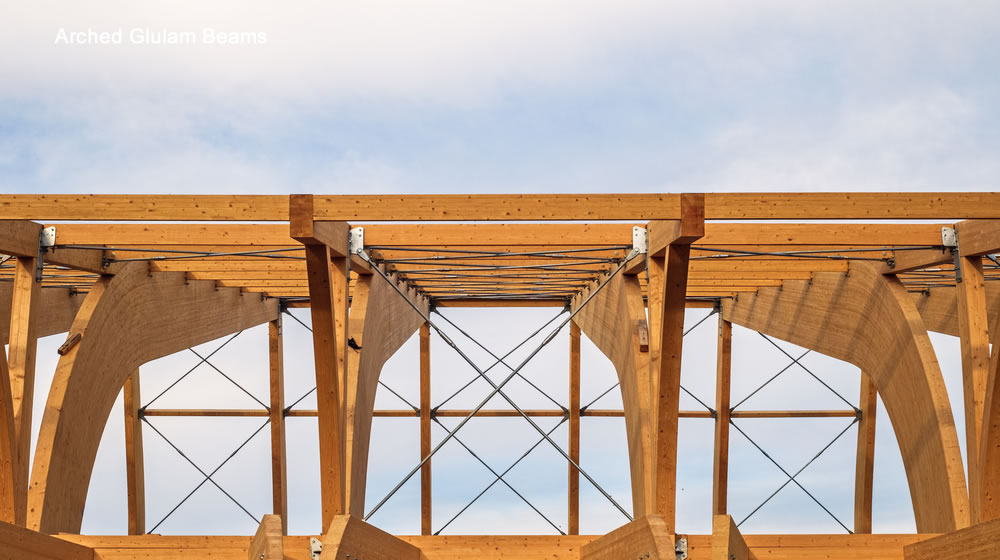
How to Select the Right Glu-Lam Beams for Your Construction Project
Understanding Glu-Lam Beams Glu-lam beams, or glued laminated timber, are a type of engineered wood product that is made by bonding together individual layers of timber with durable, moisture-resistant adhesives. This process creates a strong and stable structural member that can be used in various construction applications. The versatility in size and shape makes glu-lam beams a preferred choice for architects and contractors looking to achieve both aesthetic and functional demands. Evaluating Structural Requirements The first step in selecting the right glu-lam beams for your project is to thoroughly understand the structural requirements of your building. This includes considering load-bearing capacities, spans, beam depths, and connections. Consulting with a structural engineer is crucial as they can provide detailed calculations and recommendations based on the specific needs of your project. Factors like wind loads, snow loads, seismic considerations, and the overall design of the structure will influence the type of glu-lam beam you choose. Material Quality and Performance When selecting glu-lam beams, it is essential to consider the quality of materials used in their production. The grade of timber used affects not only the strength but also the appearance of the

What is the Environmental Impact of Using Glu-Lam Beams?
Manufacturing Processes and Environmental Resources Glu-lam beams, or glued laminated timber, are a type of engineered wood product that is both strong and versatile. The manufacturing process involves bonding layers of wood with durable, moisture-resistant adhesives. While the process utilizes less energy compared to the production of steel or concrete, it still relies on adhesives that can contain formaldehyde and other potentially harmful chemicals. However, advancements in adhesive technologies have seen a shift towards more environmentally friendly options such as polyurethane or soy-based products. Sustainable Forestry Practices The wood used for glu-lam beams typically comes from sustainably managed forests. This ensures that the impact on ecosystems is minimized and biodiversity is maintained. Sustainable forestry also helps in carbon sequestration as younger trees absorb more carbon dioxide than older ones. By promoting responsible forest management practices, the production of glu-lam beams can contribute positively to environmental sustainability by reducing deforestation rates and promoting reforestation efforts. Energy Efficiency and Carbon Footprint Compared to traditional building materials like steel or concrete, glu-lam beams offer superior insulation properties which contribute to energy efficiency in buildings. This reduces the energy required for heating and cooling,

What is the Strength Comparison Between Glu-Lam Beams and Steel Beams?
Understanding Material Properties Glu-lam beams, or glued laminated timber, are a type of engineered wood product where multiple layers of timber are bonded together with durable, moisture-resistant adhesives. This process enhances the natural properties of wood, making it an excellent material for structural applications that require high strength and aesthetic quality. In contrast, steel beams are manufactured from alloys whose primary component is iron, combined with carbon and other elements that provide high tensile strength and durability. Comparative Strength and Load Capacity When assessing the strength comparison between glu-lam beams and steel beams, several factors come into play. Steel typically exhibits higher tensile strength, which means it can withstand more stretching force before failing. Glu-lam beams, however, excel in terms of compressive strength—the capacity to bear loads that compress or shorten the material. This makes them particularly effective in vertical load-bearing applications like support columns in buildings. Flexibility and Versatility One significant advantage of glu-lam beams lies in their flexibility. The manufacturing process allows these beams to be formed into various shapes and sizes not always possible with steel beams without significant cost implications. Architects and engineers often utilize this

What is the Lifespan of Glu-Lam Beams in Construction?
Glu-lam beams, or glued laminated timber, are a type of structural engineered wood product comprising multiple layers of dimensional lumber bonded together with durable, moisture-resistant adhesives. By combining several pieces of wood, these beams often exceed the strength of traditional timber, making them a popular choice in various construction projects. Durability and Resistance One of the primary advantages of glu-lam beams is their enhanced durability compared to conventional solid sawn lumber. The lamination process helps to distribute loads and resist stress more effectively. Additionally, these beams are treated with preservatives that enhance their resistance to decay, pests, and moisture-related issues such as warping and swelling. Environmental Factors The environment plays a crucial role in determining the lifespan of any construction material. Glu-lam beams perform well under controlled conditions where exposure to extreme weather elements is minimized. In indoor environments, such as covered structures or where there is adequate protection from direct exposure to moisture and sunlight, glu-lam can maintain its integrity for many decades. Maintenance Considerations Regular maintenance significantly extends the life expectancy of glu-lam beams. This includes periodic inspections for signs of wear or damage, treating

What is a Glu-Lam Beam and How is it Made?
Understanding Glu-Lam Beams Glu-lam , short for glued laminated timber, is a type of structural engineered wood product comprised of multiple layers of dimensioned lumber bonded together with durable, moisture-resistant adhesives. This process enhances the natural properties of wood, creating a material that is often stronger than traditional timber. The versatility in size and shape possible with glu-lam beams allows architects and engineers to explore new creative possibilities in building design. The Lamination Process The manufacturing of glu-lam beams begins with selecting quality lumber, usually softwoods like spruce, pine, or fir. These woods provide the best balance between strength and flexibility which are essential for the lamination process. Each piece of lumber is then planed to a smooth finish ensuring uniform thickness before being sorted by strength characteristics to optimize the beam's final structural integrity. Adhesive Application and Layering In the next stage, workers apply adhesive to each layer of wood typically using either melamine-based or phenolic resin glues known for their robustness and environmental resistance qualities. The pieces are then layered one on top of another under controlled conditions to ensure even distribution of glue and consistent alignment.